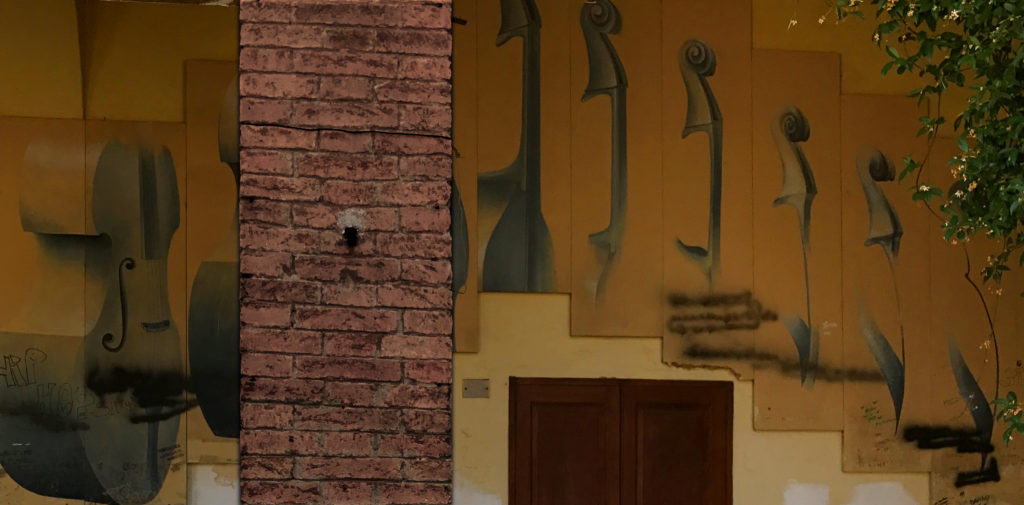 In the pre-digital era, while I was in high school, I got interested in HiFi. After finishing with college, everyday life demands took precedence. I listened to lots of music, but the equipment side was eclipsed for over twenty years. It wasn’t until 2003, when a new large screen rear projection TV was set up and the need for a new sound system to go along with it, that my interest in audio was seriously reignited. For years I had been blissfully unaware of the goings on in the land of audiophilia with one prescient exception. I recall having had a discussion, in the early ’90s, with someone who severely bashed CDs and digital. At the time, I was astonished. That encounter was my only clue to what was happening in high-end audio, but not knowing any better, I thought the basher was some sort of bizarre weirdo. Who could possibly hear analog sounding better than digital?
In the pre-digital era, while I was in high school, I got interested in HiFi. After finishing with college, everyday life demands took precedence. I listened to lots of music, but the equipment side was eclipsed for over twenty years. It wasn’t until 2003, when a new large screen rear projection TV was set up and the need for a new sound system to go along with it, that my interest in audio was seriously reignited. For years I had been blissfully unaware of the goings on in the land of audiophilia with one prescient exception. I recall having had a discussion, in the early ’90s, with someone who severely bashed CDs and digital. At the time, I was astonished. That encounter was my only clue to what was happening in high-end audio, but not knowing any better, I thought the basher was some sort of bizarre weirdo. Who could possibly hear analog sounding better than digital?
Rewind. Few would have expected that the introduction of digital audio in 1982 would spoil everything. It raised the bar and lower it at the same time. It raised the bar of signal-to-noise ratio. It raised the bar for dynamic range. It lower the bar for distortion. It eliminated wow & flutter, rumble, snapcracklepop, surface noise, and numerous other annoyances and inconveniences of LP playback. And to top it off, while raising the quality bar above the state-of-the-art analog reproduction of the period, it lower the bar of accessibility. It opened the world of high fidelity to nearly everyone across the globe. Within a few years after CDs came out, their cost dropped to mass market levels. Audio no longer needed the heavy duty dedication of time and attention, nor prodigiously deep pockets to achieve surprisingly high quality sound.
No doubt, this came as a major blow to the HiFi industry. It was also a major assault on the sensibilities of audiophiles. How could something this cheap, easy and convenient out do the previously established best? How could the industry survive without having some kind of exclusivity on high fidelity?
For the diehards, there was hope. Early digital audio had a few unforeseen glitches that the critical listeners of the era claimed to hear. Digital wasn’t going to sweep away analog—not overnight—not without a fight.
And the fight rages on, and on, and on, . . .
In a relatively short time the jitter and aliasing issues of early digital were taken to task. Mostly though, the problems were with the recording engineers adjusting to the new tools. All new technologies require a learning curve, and they soon got the hang of digital mastering. But it was too little, too late. Schrödinger’s cat was out of the box. There was no way self-respecting audiophiles were going to let go of its tail. The golden ears of the day exposed those early faults before the faults were even known to exist (or so they claimed). Although improvements were made, the problems were not completely eliminated. To this day the high-end audio industry and analog aficionados hold on to traditional technologies. There is no substitute for the graceful wiggle-room analog and tubes allow. This tolerance is in direct contrast to the brick wall of disaster inherent in digital and solid state. The Venusian beauty of analog cannot be duplicated by the unyielding Martian lockstep of digital. Top this off with the pedestrian ubiquity of digital audio and you have a ripe recipe for wrangling. Something as commonplace as CDs, as low cost, and simple to use as digital certainly couldn’t be superior. As we charge into the second decade of the 21st century, be reminded once again of the problems with digital and transistors. They still exist, and Hope still exists for some new, yet unknown defect(s) to be uncovered that will ultimately vindicate analog and show once more the inferiority of digital audio.
Well, it’s been over thirty years since its introduction. Digital continues to dodge the bullet and demonstrate otherwise. Science and technology, siding with digital, demonstrate otherwise. And even my tin ears keep telling me otherwise. But, Hope springs eternal. For the time being, analog needs the uncertainty principle to sustain its life.
Will the arguments ever stop going ’round and ’round about this dippy dispute? Not anytime soon, but there really isn’t anything to fight over. There is no war between digital and analog, or vacuum tubes and transistors, or CDs and LPs. There’s nothing to win or lose. There’s nothing to defend or condemn. There is no uncertainty. We’ve opened the box; the cat is dead.
Long live the cat.
A brief interview with J. Gordon Holt
Peter W. Mitchel chuckles
Audio Vanity
![[art]by[odo]](https://artbyodo.net/wordpress/wp-content/uploads/2011/03/cropped-Header.jpg)
